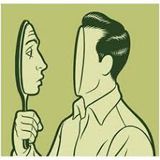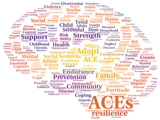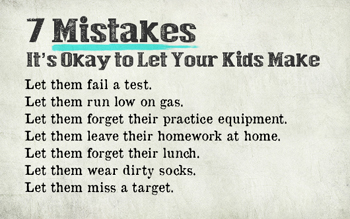Emotions
An Emotional Literacy Programme
Abstract
Emotional intelligence is the ability to think with the heart. It is the capacity to empathise and be compassionate towards people, animals, nature and even things. At its height, a person can become a channel for divine Love. Emotional intelligence is a survival skill we learn as children, but not everybody has it equally. In this article, the author lays out a practical programme to increase emotional intelligence. It is structured around some key topics that can each be taught as a series of classes. The introduction explains why emotional intelligence is important. Then the article goes on to state who should participate, how they should participate and what methods can be used to measure progress.
Introduction
Sri Aurobindo wrote that, “all problems of existence are essentially problems of harmony.” in the opening chapter of his magnum opus, The Life Divine. From geopolitical battles to misunderstandings between individuals, we can trace the root cause of problems to the lack of harmony. When we try to harmonise the different parts of our being in our sādhanā, we find that we need to harmonise our outer life too. When the inner and outer walk in step, a resonance is reached and we progress faster.
Imagine you live in a compassionate society where people care for the earth and humans and animals. They forgive mistakes. When they make mistakes, they ask for forgiveness. Everyone encourages everyone else. Everybody gets a second chance. All rejoice in one person’s victory. Opposing perspectives are openly and amicably discussed. The individual takes the community along in his progress, and the community takes the individual along in its progress. There is a collective sense of responsibility to create more joy and maintain peace.
A small step towards achieving harmony in the outer collective life would be to cultivate emotional intelligence. This article proposes a practical programme to create an atmosphere of love and unity conducive to inner growth and outward harmony. Emotional intelligence is our capacity to empathise with others. At its height it makes us channels of divine Love. From childhood we teach ourselves to read signs — facial expressions, tone of voice, body language, verbal clues. We can even use a sixth sense to intuit what others are feeling. This capacity uses both the mind and the heart, plus something subtler. For decades now, we know that people with higher emotional intelligence are more successful at work and with relationships, than people with sharp minds. Emotional Quotient, EQ, is the new IQ.
This training programme is a series of classes tailored separately for three categories of people — children, young adults and adults. For this to be meaningful, all members of a group, such as students in a class, or adults working together, are encouraged to join the same class. There will be educational material, introspective exercises and interactive sessions where real issues and case-studies will be analysed. The programme has a packed agenda. It attempts to increase compassion, dissolve egos and unite people. It will also address the problem of childhood wounds and wounding of children. If it can heal a person and make a healer of the person, it will have achieved its goal.
Who can join the programme
Dissolving one’s ego can take multiple lifetimes. Feeling the unity that comes from knowing others as ourselves is also a project for many lifetimes. Becoming a channel of divine Love that heals and unites is also a daunting task because all these are working against the grain of our biological machinery. But remaining attached to the selfish gene is against the grain of our divine nature too. Are we in a dilemma then? The answer is ‘No’. We have long passed that evolutionary milestone of worrying about physical survival. If anyone feels threatened in that respect, they should seek out individual help. The more urgent reason for joining such a programme is that a heart that is closed to the influence of Love and Grace can become open to negative influences. The Adverse Forces are waiting to seat themselves in such a body.
It is not easy to introspect on our mistakes and it is harder still to share with others, because the ego feels threatened. The aim of the programme is to give the ego a hard time. So, if we feel uncomfortable it means we are on the right track. With time, it will become easier, perhaps even laughable. We can then be sure we are making progress. Often multiple parties need to change, so if we cannot accept to change ourselves, we cannot demand it of others either. Once we agree on this together, diving into such a programme will be beneficial and enjoyable too.
Any group of people can profit from such a programme. A small group could be members of a family living in the same house. A big group could be members of an international community such as Auroville, ashrams, collective farms and kibbutzim. All educational institutes should have such a programme. Others who will profit are nurses, prisoners, policemen, lawyers, etc. White-collar employees, store workers, factory or farmhands can also come together, for say an hour every week, to learn emotional intelligence. Independent counsellors or organisations that specialise in such a training can facilitate the programme and also train facilitators. They can come to the workplace during working hours to make it easy for the workers to attend.
An appeal
For the programme to be meaningful, I would appeal to all members of a working group to join. In the field of psychological counselling, it is customary to be non-coercive. It is said, “You can take the horse to the water but you cannot make it drink. You can change yourself but you cannot change others.” If offending persons do not want to change themselves, or do not see that they are offending others, then the counsellor cannot help improve the situation. All he can do is tell the victim to be resilient, think of positive things, change his workplace, avoid the offender, etc. Helpful, but only half as good. If the counsellor looks upon the community as an integral body, then he would care for the aggressor as much as the victim. He may still not be able to force the aggressor to change, but he can try to make him see the victim’s perspective. He can walk with him and show him compassion to make it blossom in the aggressor. He can reason, encourage and persuade him to join the programme.
The willingness to look at one’s faults takes courage. Those with insecure egos, like narcissists for example, will look upon it as self-extinction. Even if the offender does not join, the rest can, and despite the offender’s absence can make great progress. I found this quote helpful — “Don’t treat people as bad as they are, treat them as good as you are.” At the end, it is all about active surrender. You do your best, be your best at all times and leave the rest to the Grace.
Code of conduct
Since we are discussing our personal problems, it is important that nobody uses it to belittle us later. Names of other persons do not need to be taken, unless it profits them too. If someone is not ready to share, they do not have to. They can work on the problem within themselves.But there is an advantage in sharing. Those who are sharing will find it uncomfortable, shameful even; but it is easier to surmount the problem when shared. The reason for group therapy is to see that there are others with the same struggles. The shadows we repress show up in ugly dreams and make us feel vulnerable, diffident, self-pitying. The lessons need to be applied in real life, outside the class, but the personal stories should not be repeated outside.
If the entire workforce or class of students has come together to learn, then it becomes much easier to practise outside the classroom. Participants can refer to certain lessons they learnt together. They can warn each other before an act is committed. We don’t notice certain trends in our behaviour or a facial expression before wehave an episode. My blind-spot is clear to someone else and their blind-spot is clear to me. We can show these blind-spots to each other in a gentle manner. The bottom line is mutual respect, the willingness to help each other and the joy of progressing together.
Metrics and wish-lists
While we practise what we are learning in the programme we should try to keep track of two metrics. Our own progress and the change we see in those we interact with. Journaling our observations and how we have applied our learning is extremely useful. Even if we don’t read our entries later, the act of writing them down makes us think about them in a focused manner. To encourage oneself, one can set goals. This can be done by preparing a wish-list for ourselves and others in our lives, including children. In our list we can be precise, if that is what works best for us. We can put down dates and numbers. For example, “By Christmas I want to double the number of times I have been encouraged”. If we want to share our expectations of others, it is best to get it reviewed by a counsellor. Our expectations may not be realistic, or the recipient may not be able to cope with all of them at once. Sharing a wish-list can be done by the counsellor who can address the emotional reactions of recipients. Parents and teachers may get wish-lists from children. Facilitators can make wish-lists for participants, and vice versa. One must remember wish-lists are to encourage. Also, they are always works in progress, just as the growing individual and the collective.
Topic 1 — empathy
There are several methods of learning to empathise and several steps in each. None of the steps are easy and neither can they be mastered in a classroom. They need to be practised constantly in real life. We will do case studies to supplement our real life experiences. Here is an example. Let us say you want to empathise with someone who is acting against you.
You start by listening non-judgmentally, like you were a third party with no vested interest. Now listen again, compassionately, as though you were this person. You can now see their point of view. Through their eyes you see yourself as the ‘other’ party. Now you tell them what you see, and wait till they agree with your understanding. You may need to do this repeatedly until you get it right. This is because you may not be able to shed your perspective the first, second or more times. Now you ask them if they want to see your perspective. An interesting phenomenon may occur here. Your old perspective may have changed while you were making the effort to look at it from another’s eyes. You present your new position and watch them patiently, the same way they watched you. After this is done, you can work out an action-plan together. Note that a plan is not a solution. Many situations do not need to have a solution. A plan needs to be a workable, practical set of action items that all parties can adhere to. The plan can be revised at later dates, as many times as is needed.
There are two caveats in learning to empathise. Firstly, it must not be pity or sympathy, which looks down upon the recipient. Secondly, if you find yourself getting enmeshed or overwhelmed then you have to work on yourself first. Getting enmeshed is when their problem starts feeling like your problem. Overwhelmed is when you feel the problem is too big for you and is stressing you out. To feel compassion, you need to open your heart and let the divine Love flow out from there to the recipient. Finally, it is not we who solve problems; it is the Grace that heals.
Topic 2 — resilience
Often in life we are at the receiving-end, and we cannot change or even confront the aggressor. This is most common for children who have no power to control their life-situations and people around them. It could also be true of people trapped in relationships with persons who have personality defects. Sometimes these defective people are trying to change, but their growth-rate is slow. Meanwhile the victim keeps getting battered. Here we will learn about common personality defects. We will learn when to retaliate and when to keep silent. We will learn tricks to dodge blows and how not to instigate the aggressor. We will learn to protect ourselves, physically and psychologically.
Mindfulness meditation develops emotional maturity. At the end of the training, the victim will not give any power to the aggressor to hurt him. This means when the blows come, they are deflected and do not reach the target. Or if they do reach, their strength is weak. The victim does not dwell on why he fell, but learns to pick himself up quickly and get out of the way.
Battered and abused people have many painful memories. These get triggered suddenly. The triggers can be events, or simply the presence of certain people. For example, if one is abused by a parent, some other similar-looking person may trigger fear or anger. Sometimes a single phrase or the timbre of a voice replays an unpleasant memory. If we can be conscious of our emotions, we can defuse the trigger. Meditation helps in developing a witness consciousness that stops us before we react to the trigger. With proper understanding of the aggressor, an emotionally independent person can try to pardon them.
Topic 3 — compassionate listening
Listening to others selflessly is a great way to get out of self-absorption. It helps us diminish the hold of the ego upon ourselves. Many sicknesses are caused by repressed thoughts. In this world where we type speech and pass them on short bursts, we rely overly on our eyes. The ears are organs worth cultivating. Remember the ssrutis were written by the hearers of truth. Here we will develop the outer hearing and, through it, awaken the inner hearing. Give the gift of listening to someone. Children learn to express themselves when someone listens to them. When it comes to faking it, people can guess it immediately. Give your undivided attention and many problems will get solved. A counsellor often says little. The client recounts his story and that process itself sets things in their right place. It is an echo of Sri Aurobindo’s “All Knowledge is Within”. Sometimes a compassionate listener urges the speaker by asking salient questions, by interjections such as, “Oh, I see”, or by encouraging gestures and nods.
Topic 4 — compassionate communication
This is the complimentary practice to compassionate listening. It is called non-violent communication and is offered as a training programme to diplomats and political negotiators. But why call it by its negative name? Words hurt more than blows. Words wound the emotional being, which has an infinite store of memories. Long-lost memories buried in the subconscious re-appear in dreams or in strange phobias and inexplicable behaviours. One of the easiest abuses to commit is psychological abuse using words. Here participants will learn to modulate their voice to remove the ‘edge’. Some people spill their anger on one person when they speak with another person. This is called transference, which is not fair towards the recipient. If you want to vent, don’t speak at that time, follow the ten-second formula of letting the impulse deflate. Participants will learn to replace certain words with others. For example, instead of giving advice, “You should do this”, it can be offered as a suggestion, “Do you think doing this will work better?”
Communication between people can cause much friction even when the two speak the same language; but remaining silent does not work in all situations. Often the lack of communication causes more misunderstandings. There is a training called ‘Crucial Conversations’ where such problems are unravelled. We will learn here to distinguish between ‘your story’ and ‘my story’. When you interpret someone else’s action, you create a ‘story’. But you are not sure it is the right one. Often people don’t doubt their version. So as the first step, we must doubt it. We can approach the person and tell them ‘our story’ and ask them if this is correct. They can then share ‘their story’and if it is different from ours, or if our story is correct, they can explain their action. Again, it helps if both parties are open to discussion, which means open to change their opinions. But of course, one must learn to clap with one hand if needed.
Topic 5 — diversity
We know there is huge diversity in humankind, but this knowledge is most often theoretical. If we ask ourselves honestly, do we allow our family members to be different, as much as say a foreigner? Even in our workplace we expect people to conform to certain patterns, which not surprisingly are just like ours. Again, this is because our ego feels threatened by the unknown. This topic discusses cultural diversity, different ethical systems, and social norms. It also teaches how body language, choice of words, intonation, etc. differ in different regions of the world. We will study different personality types from sociological and psychological perspectives. There are many models which divide people into different categories. Some of them are: givers/takers/matchers, multipliers/diminishers, optimists/realists/pessimists and other personality-type models proposed by psychologists. Here we can supplement our case studies with fictional and historical characters.
Topic 6 — memory
We collect our memories from the time we are in our mother’s womb. Many of them are not even our own experiences. We see a film, read a book, listen to someone’s experience and we internalise them. By the time we are adults we have quite a pile of them in our conscious, and even more in our subconscious parts. The bad ones we call baggage, which we would be glad to lose. Brain scientists have tried to find an amnesia pill in vain. The brain is too smart for us. It distributes memories all over and even has a back-up system. So, what if we removed the triggers of the unpleasant memories? Although medically it is impossible, psychologically it is not. If we can identify the triggers and replace them with other memories, then we would have solved the problem.
But this means reliving the memory and analysing the trigger. This can be hard. Our vital being relives the situation. We become the victim again, with all its vulnerabilities. We then talk to ourselves, explaining that it felt as bad as it did, because we were too young, or helpless, or did not have the full picture, etc. Now we have the advantage of hindsight, so it should not hurt as much. We have to tell ourselves to ‘let it go’ — not the memory, but the emotion behind it. We forgive our reactions to it. If there is a party to forgive, we do that. If there is a party who we know is ignorant or sadistic, we do not give them the power to torture us further. Self-healing means formulating a mantra such as ‘I am healed’ or ‘This has no power over me’ and the innumerable reinforcing of this mantra within.
Topic 7 — adverse childhood experiences
Here we will study child psychology and developmental stages. We will discuss Adverse Childhood Experiences or ACEs. It is not a pathological disease, but the root cause of many diseases. ACEs are abuses children receive — beatings, physical neglect, sexual assault, psychological abuse — and household dysfunctions — parents with psychological problems, parents fighting, alcoholism, drugs, spouse beating, poverty, death of a parent, parent in jail, unstable relationships. Children who experience insecure childhoods carry within their bodies the memory of their disease. Their immune system is compromised, their major organs function below par, they are more prone to get lung and heart diseases, and worse, they are prone to get addicted to alcohol, drugs and violence.
The reason is simple. Our bodies are first of all survival machines. When children, or adults, feel insecure, their brains pour out stress hormones. The fight, flight or freeze reactions kick in. The body does not then care about how well the heart is doing, how good is the breathing, how are the organs functioning. When this same reaction kicks in again and again it creates a behaviour pattern. The brain gets rewired. Various triggers can put the body in fight-flight-freeze mode throughout a person’s life. Statistics say that every ACE reduces one’s lifespan by a few years. Individuals with high ACE count can get cancer at an early age. They will probably have asthma, heart diseases, psychological problems. Those who are not shown love in childhood will grow up with deficient emotional responses. It will be easy for them to hurt others. A definite way to stop crime is to make sure children, including orphans and street children, are raised in loving homes.
This topic can be uncomfortable for children who are going through ACEs. But it is important for them to know it. This is because children with ACEs usually have low self-esteem, are poor performers at school and can have psychological issues such as Attention Deficit Syndrome. They should know the problem does not lie with them, but in their life-situation. This knowledge itself is liberating for them and is the first step to healing.
The facilitators should be trained to read signs in a child who is undergoing ACEs. A child may not know that something is not normal at home. Or the child may sense it but does not feel safe to share it with another adult. A common reason is that abusing families usually threaten the children with dire consequences if they spill it outside. Such children should be given a safe place to share. The counsellor or facilitator can then decide to talk to the parents and include them in a programme, or in worse situations make alternate living arrangements for the child. A community that is ready for self-help and mutual helping can exert a positive influence on parents without retaliatory action or shaming them. Doing surgery on the ego is a delicate job, and the counsellor does not get the submissiveness offered to a surgeon.
Topic 8 — adults dealing with children
The hard part for parents, teachers and coaches is to admit past mistakes towards children. A participant writes down these instances, and if they feel sharing with someone would help, they can do so. At the end they chalk out an action plan to deal with future occurrences. An action plan has an action item, but also a mitigation-plan — if that action does not occur. For example, take a parent who wants to stop screaming at a clumsy child. The next time he feels the anger rise, he controls it. If he can master his voice to not have an edge, he can tell the child what he should do to improve, a very practical action item. In case the outburst happens, the mitigation plan kicks in. It could be, for example, that the parent explains his struggles to the child. “I get angry but I don’t want to. Can you remind me next time when you see me getting angry?” A parent can partner with other adult family members to keep each other in check. But taking the child into confidence works better, especially if the child is also doing this programme. A point to note is that children are watching adults. They hear whatever is said, and this goes into their subconscious, even if they cannot process it right then. Children can also instinctively feel the mood, read faces, hear the tension in the voice. Once they have a sense of justice, they can sense infractions of it. Misbehaving adults trying to save face dishonestly will only dig their own graves deeper. It is better to show humility and accept one’s mistakes. Children can forgive more easily than adults, and they are less judgmental. Wilfully confusing or misleading a child will warp the child’s personality.
Topic 9 — comparing and discouraging
Each one is endowed differently; each soul has come down for a different experience. Yet we are always comparing — ourselves, other people, events, memories, artwork, literature, performances, and so on. It is hard not to compare because we are mental beings, and the mind works by classification, correlation, assigning relative grades. Comparing ourselves with others is a subconscious habit, which gets reinforced when we are compared as children. Very easily we cross the healthy limit and become competitive, jealous, angry, afraid, conceited. With the help of the witness consciousness, we can catch ourselves comparing. The next step would be to replace it with true understanding. Comparing children with anyone else often maims the child. There is a slim chance that this will spur him on, but more often it will discourage him and make him hate the person he was compared to. Siblings are often compared, with the result that they end up hating each other.
Some people are overly critical of others, though seldom self-critical. Criticism without goodwill behind it makes the victim spiral downwards. Everyone, especially children, should be encouraged, even if one thinks they do not merit it. Encouraging is different from praising. Encouragement acts as a self-fulfilling prophecy. Not encouraging a child creates long-term psychological defects in the child. He never gets enough self-confidence, sometimes to the extent of sabotaging himself to prove his elders’ poor opinion of himself. Praising too easily can become counter-productive, but keeping silent is worse.
Topic 10 — children dealing with adults
This is the complimentary programme of understanding adults, offered to children. The child is taught not to compare the adults in his life with others, or to be judgmental about them. Children will learn about adult vulnerability here. It could be a bitter pill for children because some of their idols will be demolished. But it is better to know the truth than live in a fantasy world. And with knowing the truth a child can process true worth in an unbiased way, and can take on new role models.
This lesson will teach children that adults have not solved all the problems. That sometimes they fake heroism to keep the children from knowing their weaknesses. The child will be taught to see their brighter side, to love them despite their weaknesses. They will be taught about parental constraints, of money and time, for example. Films and books can be used to add to personal experiences of the children. It also helps to make the subject less personal and painful.
Topic 11 — ecological compassion
Here we will learn about respecting nature, her limited resources and her survival techniques. This will include celebrating diversity. We will see how different pre-modern cultures venerated the earth. We will re-learn some of the ways our human ancestors thrived, recycled, re-used, and created well-being. We will figure out how some lifestyle choices can be modified to be ecologically compassionate. Modern cultures around the world have brainstormed new ways to deal with environment depredation. We will learn these and adapt whatever works for us. An idea is to form vigilante/working groups that concentrate on one project.
Conclusion
Every batch sets its own pace, and decides how much they want to dwell on each topic. The order of topics can be changed. Some can be split up and revisited. More topics can be added as the participants see fit. Participants can leave in between and return. Each one has to follow their own priorities and set their own cadences. Psychologists and counsellors will conduct the programme, and in addition they will train new facilitators. Counsellors will be available to deal with individual cases. Together we can create a harmonious community, and a family of harmonious communities.
Lopa Mukherjee is a writer and documentary maker of educational and spiritual topics, and is a psychology student in San Francisco, California.
Share with us (Comments,contributions,opinions)
When reproducing this feature, please credit NAMAH,and give the byline. Please send us cuttings.














